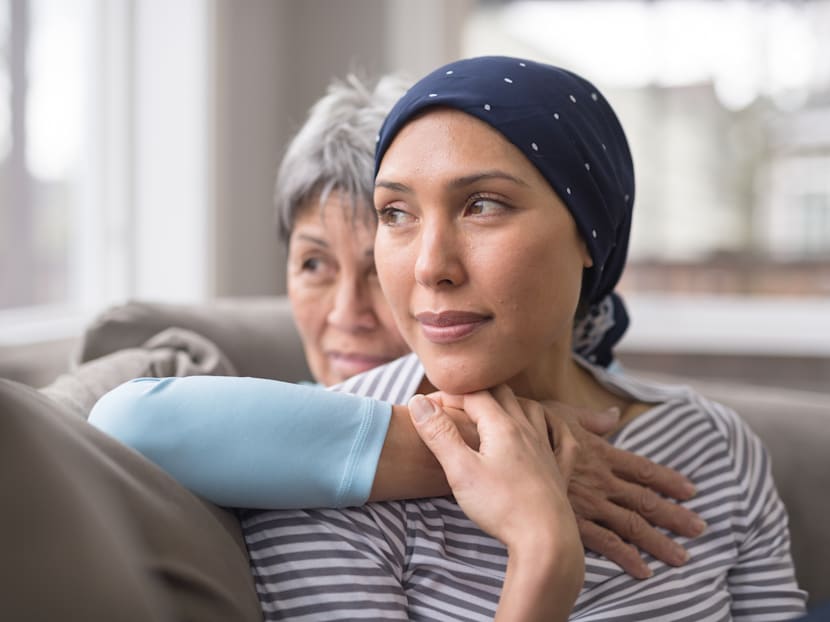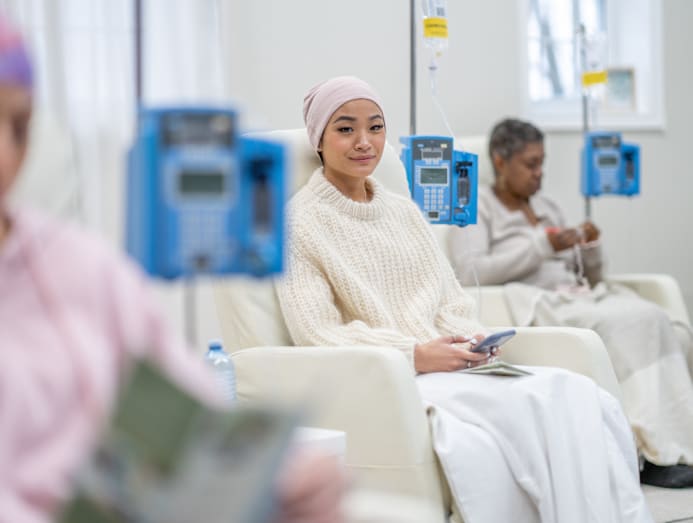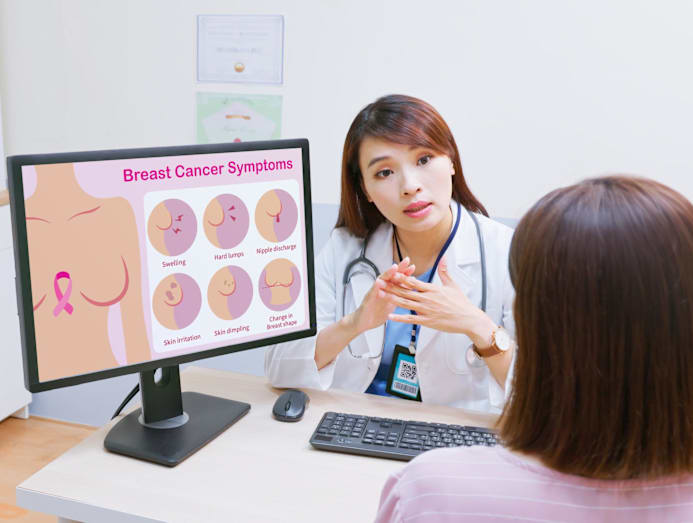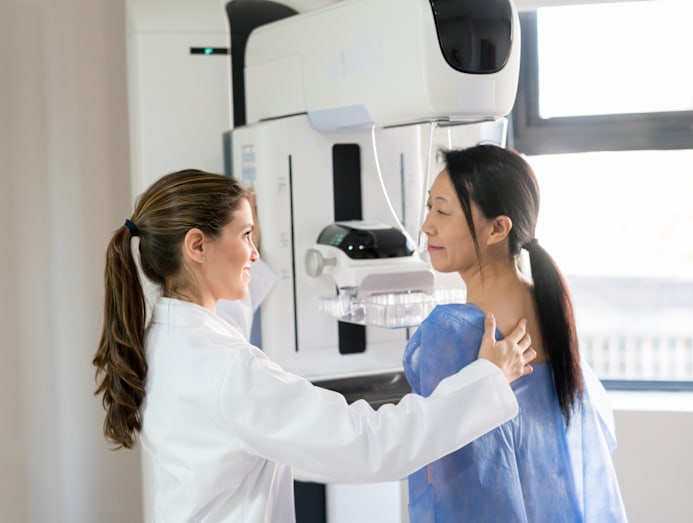6 important things doctors in Singapore want women to know about breast cancer symptoms, risks and screening
From ignoring a painless lump to skipping mammograms after an all-clear, small lapses can delay early breast cancer detection. Here’s what women should know about the most common cancer among females.

Breast cancer can affect any age group, with one in six cases occurring in women under 45. (Photo: iStock/FatCamera)

This audio is generated by an AI tool.
When women are first told they have breast cancer, the reaction is often of shock and disbelief. “But I’m healthy. I have no family history. How could this happen to me?” is a common refrain, said Dr Ang Wei-Wen, a consultant breast surgeon at Tan Tock Seng Hospital’s (TTSH) Breast Surgery Service.
Many assume that breast cancer only strikes those with “bad genes” or unhealthy lifestyles. In reality, the top female cancer in Singapore can happen to anyone, with many cases occurring spontaneously, said Dr Ang.
Dr Sabrina Ngaserin, senior consultant breast surgeon and medical director of Breast Surgery Care Partners, added: “Only about five to 10 per cent of breast cancer cases are thought to be inherited. For most women, there is no single clear cause. Breast cancer typically develops from a combination of different factors."
What’s worrying is that about one in 10 cases of all breast cancer cases in Singapore are diagnosed at Stage 4 – far higher than in other developed countries, Dr Ngaserin noted.
In South Korea for instance, Stage 4 diagnoses accounted for less than one per cent of new cases in 2021, according to the Korean Breast Cancer Society registry.
Part of the problem, Dr Ngaserin said, is that some older women delay seeking help because they assume that the absence of pain means nothing serious.
“Meanwhile, younger women in their 20s or 30s do come forward when they notice changes, but are sometimes falsely reassured since benign breast conditions are far more common at their age,” she added.
Doctors tell CNA Women that staying informed and acting early upon noticing changes can make a big difference.
1. BREAST CANCER CAN AFFECT ANY AGE GROUP
No age group is spared from breast cancer, said Dr Lim Sue Zann, a senior consultant and breast surgeon at Solis Breast Care and Surgery Centre. She recalls that her youngest patient was just 19 years old when she was diagnosed; her oldest, 98.

“Most women are diagnosed after age 50 but we must not overlook that one in six cases occur in younger women, under 45,” said Dr Ngaserin. In Singapore, women face an estimated 8.3 per cent lifetime risk of developing breast cancer, she added.
2. YOUR BREASTS TELL A STORY – SO DON’T SKIP MONTHLY SELF-EXAMINATIONS
Dr Lim advises starting regular breast self-examination once girls reach puberty.
For women with active menstrual cycles, timing is key. TTSH’s Dr Ang recommends examining seven to 10 days after the period, when there is less breast tenderness and discomfort. “For post-menopausal women, choose a regular time each month,” he said.
Pay attention to any changes in size, shape or appearance of the breast, the overlying skin, nipple and areola, or axillary region (armpit), advised Dr Ngaserin.
These checks are not just about randomly feeling around, but to become familiar with your own body.
“The importance of this regular breast examination is because you know your breasts the best,” explained Dr Ang. “Essentially, by regularly checking, you can pick up very subtle abnormalities that a (doctor) who may just see you once a year may not pick up so rapidly. If you notice any changes from your baseline, highlight that to your medical practitioner.”

The earliest signs of breast cancer are often subtle, such as textural changes before a lump becomes noticeable, said Dr Ngaserin.
As the disease progresses, dimpling, pitting, redness, ulceration of the skin or nipple area may develop. Nipple discharge is also a concern if it is bloody, spontaneous and persistent, she added.
Seek medical attention if you notice any sudden, unexplained or persistent change.
3. THAT PAINLESS LUMP COULD BE A RED FLAG
Not all breast lumps hurt, but the absence of pain does not mean it is harmless.
A painless lump is more likely to be suspicious compared with a painful lump, said Dr Lim. Painful lumps are commonly caused by benign (non-cancerous) conditions such as mastitis, abscess, infected cyst or fibrocystic changes, she added.
Dr Ang said that the majority of lumps are benign, with only around 10 to 20 per cent turning out to be malignant on evaluation.

When you discover a new breast lump, pay attention to other warning signs. According to Dr Lim, seek medical attention early if you notice any of the following:
- Persistent lump: One that is constantly present throughout the menstrual cycle.
- Immobile lump: It does not move between your fingers.
- Lump associated with overlying skin changes: Skin over the lump may be thickened, dimpled or broken.
- Lump associated with nipple discharge: Especially if the discharge is bloody.
- Another concurrent lump under the armpit: This could signal spread of cancer to the lymph nodes.
4. A SINGLE CLEAR MAMMOGRAM IS NOT A LIFETIME PASS
A common misconception women have is that getting an all-clear on a single mammogram means that they are safe from breast cancer, which leads many to skip their recommended checks.
“A mammogram is just a snapshot in time,” Dr Ang explained. “Between one screening and the next one, there can be new developments. That’s why consistency is important.
“If you're screening annually, make sure you try to do it annually. What we don’t want is someone doing one mammogram, and then doing the next one 10 years later,” Dr Ang added.
In Singapore, it’s recommended that women aged 40 to 49 get a mammogram every year while those aged 50 and above should get one every two years.
Why the difference in screening frequency? It has to do with how breast cancer tends to behave across different age groups. In the younger age group, breast cancer tends to be more aggressive whereas for women in the older age group, the tumours tend to be slower-growing, explained Dr Ang.

For patients with a family history of breast cancer, it is advisable to begin screening 10 years prior to when the younger family member was diagnosed, added Dr Ngaserin.
5. MAMMOGRAM RADIATION FEARS DEBUNKED
Some women worry about excessive radiation exposure from repeated mammogram screenings. But the experts reassure them that radiation exposure from a mammogram is minimal.
“A screening mammogram does not pose direct harm to one’s health,” said Dr Ngaserin. “The radiation dose is extremely low – similar to natural background exposure over about seven weeks or a few transatlantic flights, and has never shown to cause harm.”
Dr Ang added that studies have shown that people who go for annual mammograms do not have a significantly increased risk of developing cancer. “The benefits of picking up breast cancer from screening definitely outweigh the very low or rare risk of developing a cancer based on these exposures,” he said.
About half of women of screening age have dense breast tissue, said Dr Ngaserin. This means they have more fibrous and glandular tissue, and less fatty tissue.
For women who are recognised by a health professional to have severely dense breasts, or those assessed to be at a high risk of breast cancer, additional advanced screening such as contrast-enhanced breast MRI is advised, she said.
6. BREAST CANCER GENES CAN COME FROM EITHER PARENT
The most common breast cancer gene mutations, BRCA1 and BRCA2, can be passed down from either parent, said Dr Lim. This means a family history of breast cancer on both paternal and maternal sides is relevant when considering genetic testing.

If someone in the family has breast cancer, it is advisable to start genetic testing with that individual first, said Dr Lim. If they test positive for a mutation, other family members are advised to consider testing to understand their own risk, she added.
Dr Lim said women should consider genetic testing if they:
- Were diagnosed with breast cancer before age 40
- Have had cancer in both breasts (either at the same time or sequentially)
- Have had triple-negative breast cancer diagnosed before age 60
- Have had a personal history of other cancers, especially ovarian cancer
Breast cancer can also occur in men, and male breast cancer at any age is strongly associated with hereditary mutations, she added.
Does a positive test mean that breast cancer is inevitable? Not necessarily.
According to Dr Lim, the risk of developing breast cancer after a positive genetic test result depends on the specific mutation. For example, women with a BRCA1 mutation face an estimated lifetime risk of around 60 per cent.
“While the risk is higher than average, it does not mean that the individual will definitely get breast cancer,” she said.
For those who test positive, several strategies are available to reduce cancer risk. These include screening at a younger age, risk-reducing surgery or risk-reducing medication, said Dr Lim.
CNA Women is a section on CNA Lifestyle that seeks to inform, empower and inspire the modern woman. If you have women-related news, issues and ideas to share with us, email CNAWomen [at] mediacorp.com.sg (CNAWomen[at]mediacorp[dot]com[dot]sg).




